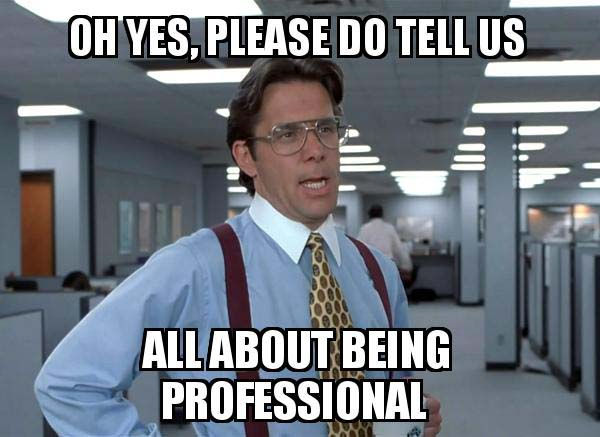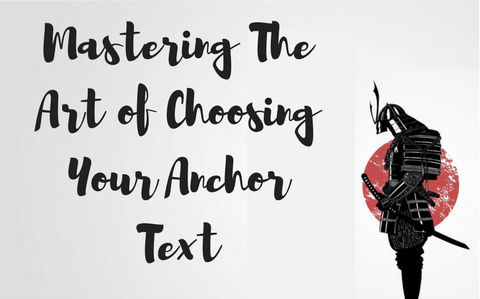Are you not getting the results you expect?
Feel like there’s something ‘missing’?
You send link after link yet your rankings stay still, or even worse, go down nowhere to be found?

These are common scenarios, more common than you think. And in many cases, it’s not due to the quality of links nor your website itself… it’s all about your anchor text. It’s one of the most important elements in any link building campaign, yet not everyone knows how to choose it correctly.
In this guide, you are going to learn how to master this art. If you want your rankings to go up and make your wallet smile, then this guide is for you. Because this can make a HUGE difference in the results of your link building campaigns and SEO projects.
Table of Contents
The Basics:
Let’s get things clear right off the bat, shall we? This is especially important for newcomers to this profitable, marvelous and exciting game of search engine optimization.
What Is It And What Are Its Different Types?
What’s an anchor text? In simple terms, it’s the visible words you can click on and be redirected to another webpage on the same website or to any other place on the internet. Easy to understand.
But you must know that there are TYPES of anchor texts. And we are going to examine each of them in just a few moments. It’s important to know about each one of them.
First, we have the Exact Match. “With great power comes great responsibility”. It’s highly powerful but also quite dangerous because it’s the exact keyword we are looking to rank for.
Let’s suppose you want to rank a page on your website for the keyword “best dog beds”, then an exact match anchor text would be the same keyword.
The Partial Match. As its own name clearly suggests, it’s an anchor text which partially includes our keyword. Contrary to what many people in this world of SEO believe, a partial match is not including your MAIN keyword in a larger phrase. Again, using the previous example, a good partial match anchor text would be: “dog beds, “dog bed”, “large dog beds”, etc. You can obtain it with the help of Semrush.com or Ahrefs.com.
The Phrase Match. Many people confuse the partial and phrase match. In this case, if you wanted to use a phrase match anchor text, then you could use one of the following: “best dog beds for puppies”, “best dog beds for large dogs”, etc.
Branded. The name is highly suggestive. Again, using the same example, let’s suppose your website about dogs is called TheRealDogPlace.com, then the anchor text would be “The Real Dog Place” or “TheRealDogPlace.com”.
Generic. It’s the type that, as its own name can tell you, uses generic phrases like: “Click here”, “read more”, “source”, “check this”, etc. You name it.
Naked URL. It’s simply linking to your page by using the URL or a variation of it. A few examples would be: http://www.TheRealDogPlace.com/best-dog-beds-reviews-and-ratings, http://TheRealDogPlace.com/best-dog-beds-reviews-and-ratings.
Images. You can also use images to link to the web page you want to rank. It can be a good way to balance your anchor text and add in some diversity.
Author Anchor Text. You can use your own name or your persona’s names as the anchor text.
These are the most important types. As you can see, there’s more than simple exact matches. And you should use several of them in every single link-building campaign you launch.
Now it’s time to go and see how it affects your rankings and how the mighty Google uses it. It’s also used by other search engines like Bing and Yahoo, but as I am sure, most of us are simply focused on the big G.
How Does It Work?

In simple words: Google uses it as one of the leading indicators of a web-page’s topic. As we are going to see, in the past one could easily manipulate it, but things are more complicated nowadays.
Back in the day, one could fire exact matches at will with excellent results. Doing that now, well, is one of the dumbest things you can do. If you want to win, then you need to play by the modern rules.
Google’s algorithm has evolved since then… it has reached an entirely different level. In the good old days it used to rely primarily on anchor text, but as we all know, almost everyone abused it. It was open to manipulation. Therefore spam was the rule. But things have changed.
Penguin is the key name here. It appeared for the first time in 2012, and since then things changed forever. By checking the anchor text, Google could now easily determine if a website was cheating.
Why? Let’s suppose the 100% anchor texts for “TheRealDogPlace.com/best-dog-beds-reviews-and-ratings” was “best dog beds”. It would be sent to a journey down to hell by Penguin because it’s not “natural”. No website out there would have such a disastrous anchor text percentage by natural means.
How does Penguin work? How does it get its job done? It’s quite simple, and you are going to understand it in a couple of seconds.
First, you build a backlink. Then Google indexes it, and once it is indexed, it’s stored and made part of your link profile.
Google repeats the previous process many times, over and over again, till it has a dense and rich link profile the algorithm can work with.
Once this important element is fabricated, the algorithm proceeds to grab it and then use your on-page optimization to compare it with. With the finality of determining if you are trying to game the algorithm. How so? Let’s check this simple example:
Using our example TheRealDogPlace.com, let’s say it’s on-page optimized for the keyword “best dog beds” using a high keyword density, putting it in all headings, alt-tags, etc. And the link profile determines if you are using the same keyword in 100% of the casualties.
If this scenario is given, then Penguin proceeds to PENALIZE your web page. Because Google can determine that you are trying to rank for “best dog beds” and that you are building links artificially to achieve it.
Fortunately, Penguin is not a big monster you cannot defeat. You can make it your best friend, but you need to know how to deal with it. You need to master the art of persuading it, and in large part, it depends on how well you pick your anchor text. Now let’s check how you need to do it.
How to Pick Your Anchor Text Like a Pro:

There are several approaches, and in this section, you are going to learn about them. You are free to pick the one that better suits you, but take into account that from these strategies there’s one I prefer above the rest, and possibly you will choose it as well.
The Partial Match Way (My Favorite):
Let’s start with my favorite strategy. I really like it, because it works wonders for me and has been that way in several projects. And I can bet, you like things that work. Therefore, you should check this approach.
You already know what a partial match anchor text is, if not, then check The Basics section. Now that you know its definition, all you need to do is to apply it to your SEO campaigns.
This strategy uses the power of partial matches and their “ability” to remain under the radar. That’s why it’s my favorite.
Now, how can you pick your partial match anchor texts? It’s actually pretty easy. All you have to do is to go to Semrush.com and put your main keyword, in this case using our example once again, it’d be “best dog beds”.
You can also use Ahrefs.com (their keyword tool works very well). Anyway, here you have a good list of partial match anchor texts for our main keyword:
- large dog beds
- elevated dog bed
- dog beds
- pet beds
- orthopedic dog bed
- raised dog bed
- dog bed
These are some of the many anchor texts we can use in our campaign. As you can see they PARTIALLY contain our keyword. Google’s smart enough to tell what you are talking about. Therefore, go down this route and you will obtain better results. Instead of solely relying on exact match anchor texts – as many people do – you should look forward to trying this approach.
Should you start right away with a partial match? No, you should not. When building the first links to your site, you should create links using the following types:
- Branded
- Generic
- Naked URL
- Author
These will allow you to remain under the radar, so you can later hit your web page with the good stuff, which is the partial matches in this case.
You should always start off this way so you can build a natural-looking link profile. As most of us know, your website will go under a “testing period” for some time. You do not want to trigger a warning. Therefore you should always start off with this type of anchor texts.
As you will read later under this section, you can use co-occurrence to increase the power of your links with generic, branded, naked URL and other types of anchor text (not partial or exact matches). You can also use it at the hour of building your first links, but you should use a partial match near to your links instead of an exact match… just in case.
The Branded Approach:
As the name clearly tells you it’s a strategy which focuses on building backlinks prioritizing branded anchor text. In fact, you should always look forward to choosing a branded domain for every website you make (in most cases). This type should comprise around 70-80% of your entire anchor texts.
Let’s say you build 10 links to an individual page on your website. In this case, around 7-8 links should contain a branded anchor text, once again using our previous example, the possible picks would be:
- The Real Dog Place
- com
- THE REAL DOG PLACE
You get the picture. But why should you use this approach? It’s not a secret that Google likes brands. On top of that, using this type of anchor text as your top choice is a very safe move, unless you have an exact-match domain. That’s an entirely different scenario.
If you take the time to check with Ahrefs or Majestic some of the biggest websites out there, let’s say MayoClinic.org, then you will see that the huge majority of its anchor texts are of the branded type: Mayo Clinic, The Mayo Clinic, MayoClinic, etc.
This strategy looks natural, allows you to remain under the radar and stay out of the danger zone. But the requisite is to have a branded domain, not an exact-match one.
The Generic Strategy:
In this strategy, we prioritize the use of generic anchor texts. Here you have a good list of the best options you can use:
- Click here
- Read this article
- Source
- Check this blog post
- Read this blog post
- Check out this post
You get it. Along with the branded approach, it’s one of the safest. Using our MayoClinic.org example again, we can see that the anchor text “here” is one of the most used by links built to the site.
Once again, Google is smart enough to identify the context where your link is placed. If the article linking to your site is topically relevant and the text surrounding your link is relevant, then Google can figure out what you are talking about without having to use an exact match anchor.
The Naked URL Way:
As you can easily tell, this strategy mainly uses the naked URL anchor text. Using our website example, TheRealDogPlace.com, these would be the chosen picks:
- Http://TheRealDogPlace.com
- http://www.TheRealDogPlace.com
- http://www.therealdogplace.com/
You get it. Just like the previous strategy, Google can figure out the context. And now you are going to learn how you can “supercharge” the branded, generic and naked URL approach.
The Magic of Co-Occurrence:
It may be kind of repetitive at this point, but you should know that Google is smart… far smarter than back in the day. Therefore, it can easily understand the context where your link is placed.
The best way to super-charge your branded, generic and naked URL anchor text is to make sure it’s put in a topically relevant article. In fact, you should always go down this route. It looks more natural and works far better than putting your anchor text in an article which is not even remotely related to your niche.
Now, the best way to make sure your anchor texts hold more power is to place your main keyword or a variation of it as near to your anchor text as possible. Here you have some examples:
- Branded: “…If you want to learn more about the best dog beds, then visit The Real Dog Place”.
- Generic: “…Want to discover what the best dog beds are? Then click here”.
- Naked URL: “…In the following page, you can check many reviews on the best dog beds: http://www.TheRealDogPlace.com”.
Of course, your links should be placed in bigger pieces of text. But with these examples, you can easily understand how you can implement co-occurrence. Put your main KW near to your anchor text, and that’s it. As simple as that.
Connecting The Dots And Final Words:
You need to think out of the box. See beyond the exact match anchor text. Now you have useful resources to make your link building campaigns safer and more efficient.
I’m aware that many experienced SEOs already know about these strategies and approaches, but I’m also pretty sure that this is going to help many of those who are new to this world or simply need to think out of the box.
As you can easily see, you can make your campaigns better by choosing the right anchor text. Be smart and look as “natural” as possible. We are gaming the system, you should know it. But the secret of success is to remain under the radar and look as natural as possible. And it all depends on, in a large proportion, to the kind of anchor text you use.
Use this to your advantage. Make Penguin your best friend by persuading it. And now you know how you can do it. Craft your strategy using the tips and advice you have found in this article.
Don’t think about the limitations but about the possibilities which are endless. If you are planning to play the SEO game for the long run, then by using these strategies you can supply your sites with the power they need to rank in a “safe” way.
Nothing is 100% safe in Search Engine Optimization. We are TRICKING the system, just that there are safer and riskier practices. These approaches bring you a right balance between safety and power.
That’s all. I hope you enjoyed this article and now all you have to do is to put this into practice.

